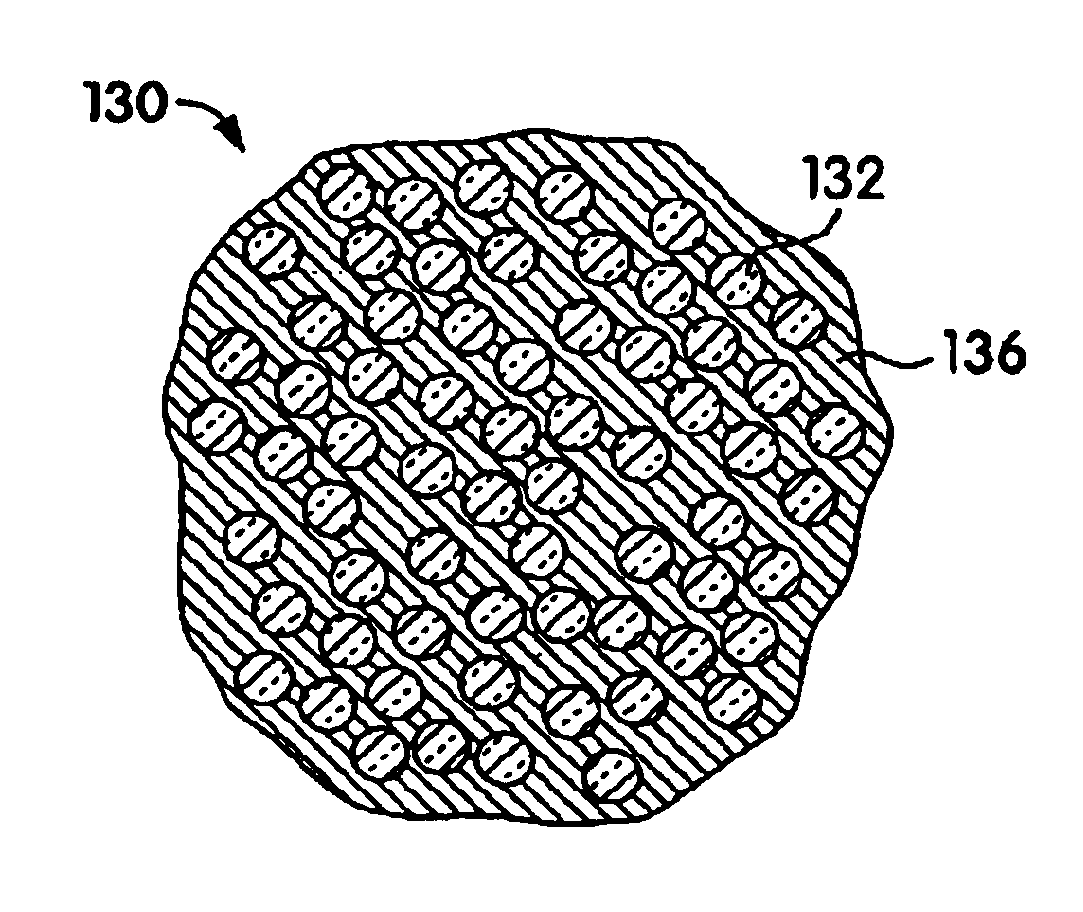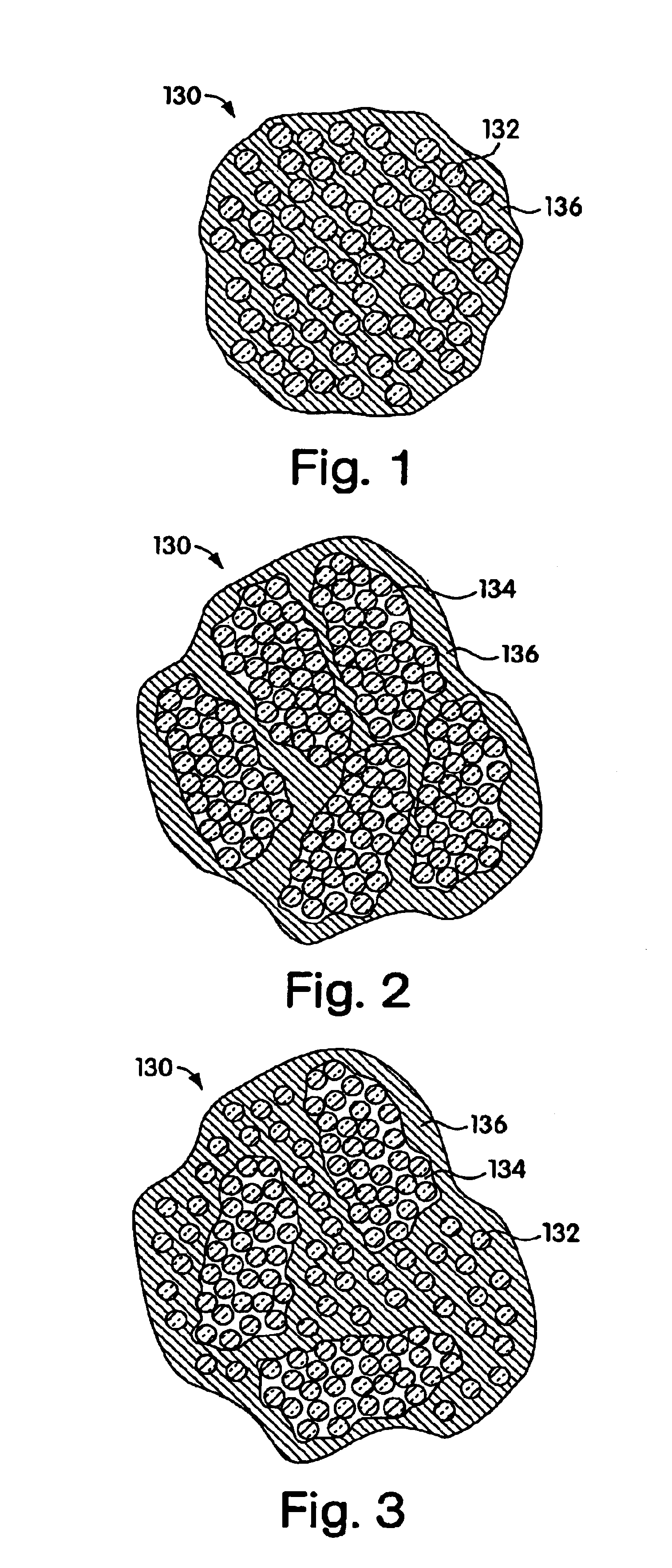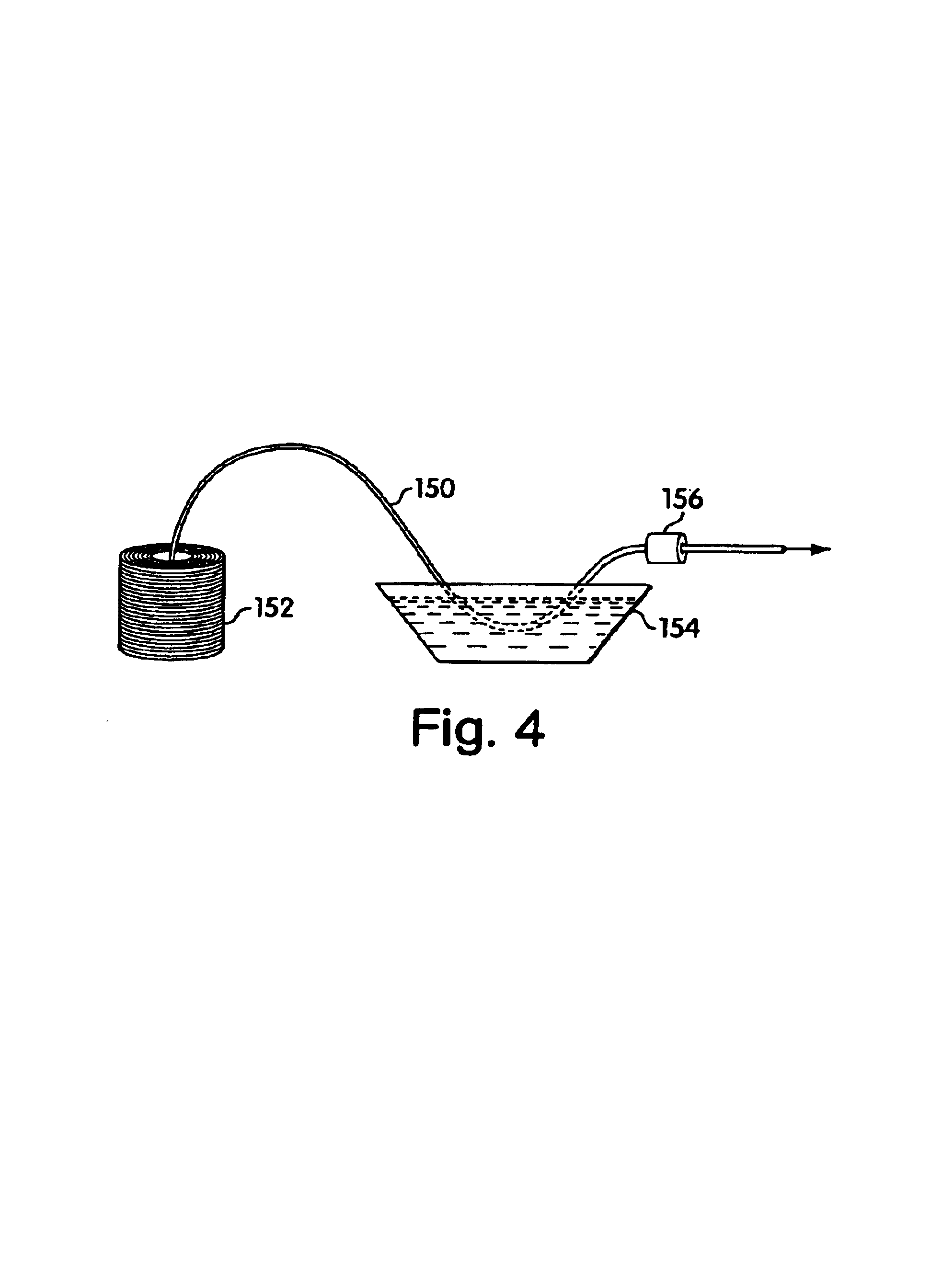Low cost, high performance, rodent resistant, flexible reinforcement for communications cable
a flexible reinforcement and communication cable technology, applied in the field of reinforced communication cables, can solve the problems of increased installation costs, increased cable manufacturing costs, and significant cable environment problems, and achieve the effects of low cost, high performance and more rigidity
- Summary
- Abstract
- Description
- Claims
- Application Information
AI Technical Summary
Benefits of technology
Problems solved by technology
Method used
Image
Examples
Embodiment Construction
[0028]The present invention relates to a new rodent resistant, flexible reinforcement member that may be used in telecommunication cables such as optical cables or copper cables. FIGS. 1-3 below illustrate three preferred embodiments of the rodent resistant, flexible reinforcement member.
[0029]FIG. 1 illustrates a cross-sectional view of the rodent resistant, flexible reinforcement member 130 according to a preferred embodiment of the present invention. The member 130 is comprised of a strand having a plurality of single filaments 132 of glass fibers saturated with a primary saturant 136. The diameter of the filaments is preferably between about 1 and about 89 microns, more preferably between about 15 and about 36 microns and most preferably between about 34 and about 36 microns.
[0030]Referring now to FIG. 2, another preferred embodiment shows the member 130 having a plurality of strand bundles 134 replacing the individual filaments 132. Also, FIG. 3 depicts the member 130 as having...
PUM
| Property | Measurement | Unit |
|---|---|---|
| diameter | aaaaa | aaaaa |
| melt viscosity | aaaaa | aaaaa |
| melting point | aaaaa | aaaaa |
Abstract
Description
Claims
Application Information
 Login to View More
Login to View More - R&D
- Intellectual Property
- Life Sciences
- Materials
- Tech Scout
- Unparalleled Data Quality
- Higher Quality Content
- 60% Fewer Hallucinations
Browse by: Latest US Patents, China's latest patents, Technical Efficacy Thesaurus, Application Domain, Technology Topic, Popular Technical Reports.
© 2025 PatSnap. All rights reserved.Legal|Privacy policy|Modern Slavery Act Transparency Statement|Sitemap|About US| Contact US: help@patsnap.com



